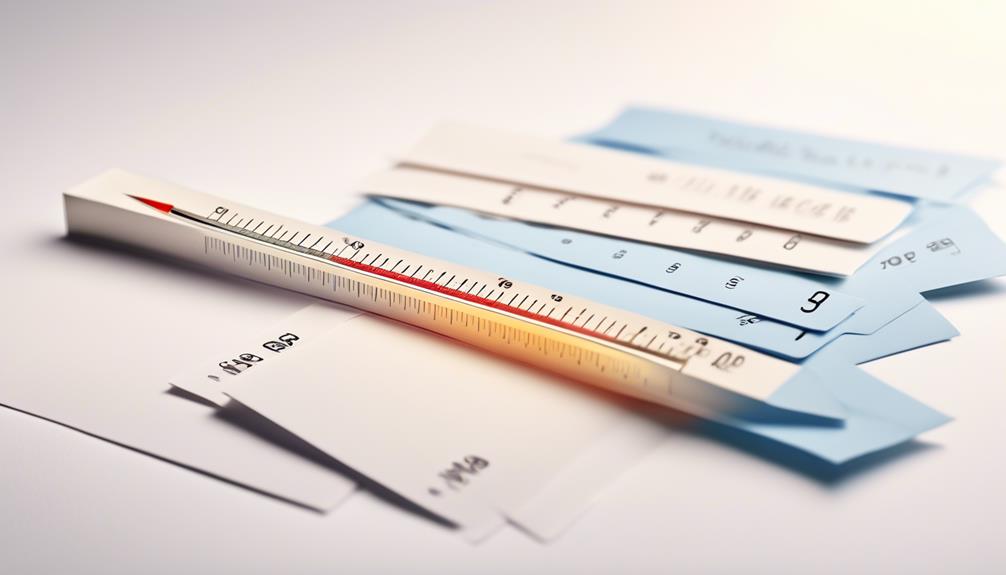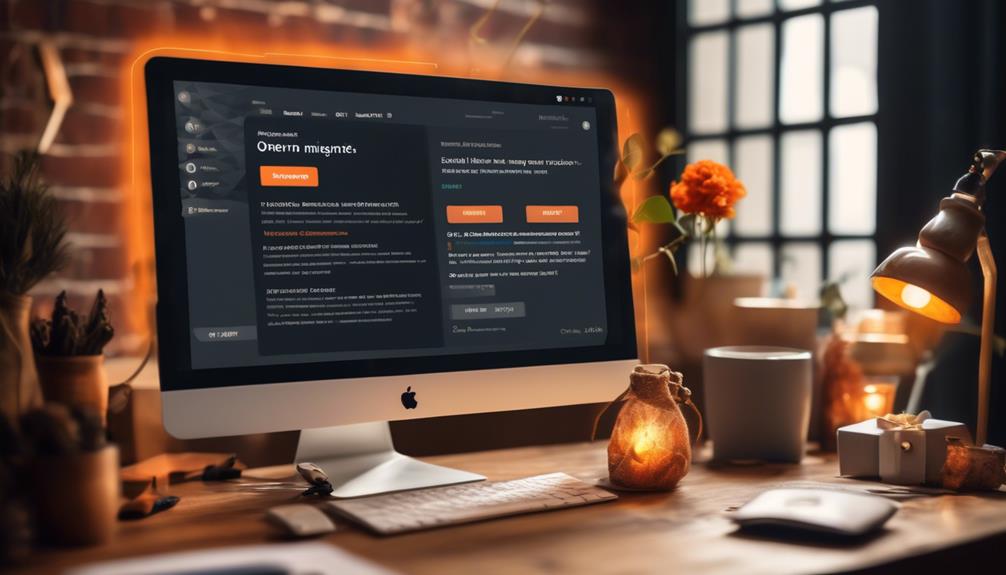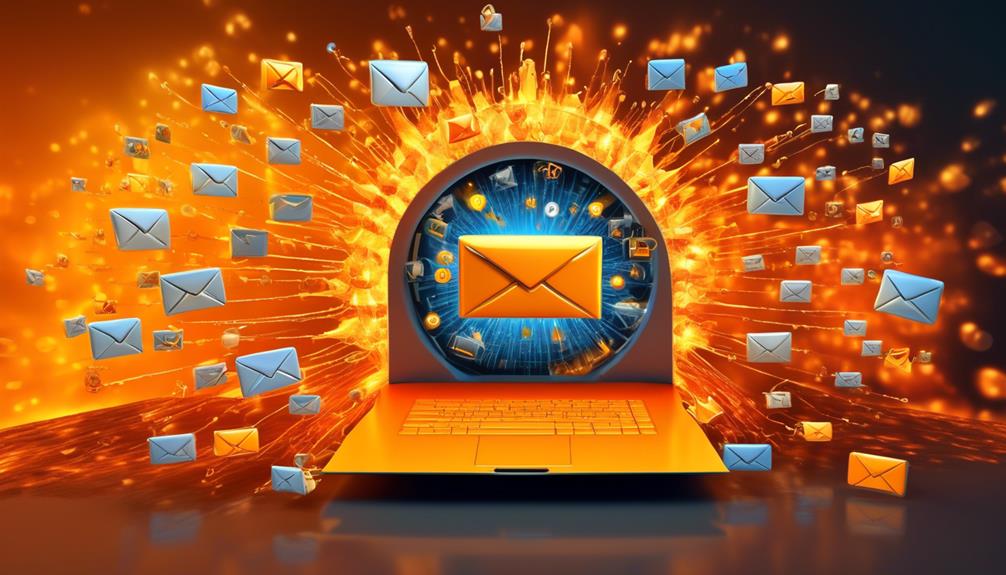The significance of warming up an email and its impact on ensuring successful email delivery might not be universally acknowledged.
Have you ever wondered how long it actually takes to warm up an email account effectively?
The timing of this crucial phase can vary based on several factors, and understanding the optimal duration can make a substantial difference in your email marketing success.
Let's explore the factors affecting the time it takes to warm up an email and how to navigate this essential phase efficiently.
Key Takeaways
- Email warm-up typically takes 8 to 12 weeks for optimal results.
- Consistency, patience, and utilization of warm-up tools are essential for success.
- Configuring account settings, authentication, and personalized content are crucial steps.
- Email warm-up improves deliverability, reputation, and overall email marketing effectiveness.
Factors Affecting Email Warm-up Time
To ensure successful email warm-up, understanding the key factors that influence its duration is essential. Email warm-up is a critical process to establish a positive reputation for a new email account and improve deliverability to the inbox. Factors such as the volume of emails being sent, the email service provider used, and the initial engagement metrics all play a significant role in determining how long the warm-up process will take.
During the warm-up period, it's crucial to gradually increase the volume of emails being sent to avoid being marked as spam. Waiting 3 to 4 weeks before beginning cold email outreach is a recommended practice to allow the warm-up process to take effect. Patience is key during this phase, as it provides an opportunity to refine the quality of cold email campaigns and build a strong foundation for future email sending.
Consulting with email deliverability experts and adhering to best practices will help navigate the complexities of email warm-up, ensuring a successful transition from a cold to a warm email account.
Optimal Duration for Email Warm-up

As we navigate through the critical process of email warm-up, it becomes evident that the optimal duration for this phase typically ranges from 8 to 12 weeks. During this time, it's crucial to follow a strategic approach to ensure a successful warm-up process.
Here are some key points to consider:
- Consistency is Key: Maintaining a consistent warm-up routine is essential to building a positive sending reputation over time.
- Patience Pays Off: It's important to remember that establishing trust with email providers takes time, so patience is a virtue during this process.
- Utilize Warm-up Tools: Leveraging proper warm-up tools can help automate and streamline the warm-up process, making it more efficient and effective.
- Adapt Outreach Strategies: As you warm up your email, consider adjusting your outreach strategies to align with your evolving domain reputation and to avoid triggering spam filters.
Recommended Steps for Email Warm-up
How can we ensure a successful email warm-up process that cultivates trust and engagement with recipients from the very start?
To kickstart the email warm-up process effectively, it's crucial to configure your email account settings, ensuring the 'from' line and signature are professional and trustworthy. Additionally, setting up Sender Policy Framework (SPF) and DomainKeys Identified Mail (DKIM) records for authentication is vital to establish credibility with email providers and recipients.
Begin by manually sending a small batch of emails each day, gradually increasing the volume to mimic natural email outreach patterns. Craft personalized and engaging content for your emails to foster a connection with recipients.
As responses start coming in, make it a priority to actively engage and reply, sparking meaningful conversations.
Impact of Email Warm-up on Effectiveness

Embarking on the journey of email warm-up not only paves the way for enhanced deliverability and inbox placement but also cultivates a strong foundation for establishing trust and credibility with recipients. The impact of email warm-up on effectiveness can't be overstated.
Here are four key ways in which email warm-up can significantly boost your email marketing efforts:
- Improved Deliverability Rates: By gradually increasing the volume of emails you send, you signal to ISPs that you're a legitimate sender, thus reducing the chances of being marked as spam.
- Enhanced IP Reputation: Consistent warm-up practices help build a positive reputation for your IP address, increasing the likelihood of your emails reaching recipients' inboxes.
- Established Sender's Reputation: Through warm-up, you demonstrate to email providers that you're a trustworthy sender, which can positively impact how your emails are treated.
- Reduced Risk of Landing in Spam Folders: Proper warm-up decreases the probability of your emails being filtered into recipients' spam folders, ensuring that your messages are seen and engaged with.
Mastering the art of email warm-up is crucial for optimizing your email marketing success.
Timing Considerations for Email Warm-up
To successfully navigate the process of email warm-up, it's essential to carefully consider the timing of your actions to maximize the effectiveness of your efforts. When you need to warm up your email, timing plays a critical role in building a positive sender reputation and ensuring your messages reach recipients' inboxes.
Email service providers closely monitor how you warm up emails, taking into account factors like the gradual increase in email volume, engagement with recipients, and the marking of emails as important. By following a structured warm-up schedule over 8 to 12 weeks, you can establish trust and credibility, especially if you're dealing with invalid email addresses or using a dedicated IP address.
Proper timing during warm-up helps your emails bypass spam filters, leading to higher deliverability rates and improved open rates. Remember, the way you time your warm-up process can significantly impact the success of your email campaigns and overall sender reputation.
Frequently Asked Questions
How Do I Know My Email Is Warmed Up?
We determine our email is warmed up by monitoring metrics like open rates, response rates, and inbox placement. Consistent positive trends indicate a successful warm-up process.
Analyzing engagement levels and avoiding spam complaints also signal readiness. Our attention to detail and strategic adjustments ensure our email reputation remains strong.
Trusting the process and staying proactive in refining our campaigns are crucial to maintaining warm-up success.
How Many Emails Does It Take to Warm Up?
When warming up email accounts, the number of emails sent matters. We know that sending a precise amount is like adding logs to a campfire—each one fuels the heat a bit more.
It's a gradual process, typically taking around a month, so we recommend patience. Starting with a modest number, gradually increasing, ensures a smooth warm-up.
Does Warming up Email Work?
Warming up email definitely works! It's a crucial step in establishing trust with email providers and improving deliverability. By gradually increasing our email volume, we build a positive sending reputation, which leads to better inbox placement.
Following best practices, like authenticating our accounts and monitoring engagement metrics, enhances the effectiveness of our warm-up process. It's a tried and true method that can significantly boost the success of our email campaigns.
How Long Should an Email Take to Arrive?
When wondering about email arrival time, we need to consider various factors like server load and network speed. Understanding these elements helps predict email delivery times accurately.
Our experience shows that emails typically arrive within seconds to a few minutes. However, delays can occur due to server congestion or internet issues.
Conclusion
In conclusion, email warming is a crucial step in building a strong foundation for successful email marketing campaigns.
Just like Rome wasn't built in a day, establishing a positive reputation with email providers takes time and patience.
By following best practices and gradually increasing email volume, you can pave the way for improved deliverability and higher open rates.
Remember, slow and steady wins the race when it comes to email warming!










